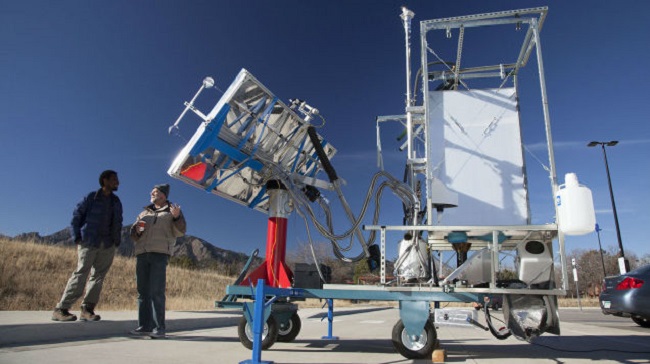
If you’ve ever had the pleasure of using an outhouse, then you’re undoubtedly familiar with its rancid, pit of fecal despair. I clearly remember the outhouse behind my grandparents’ European farm, built within a rusted cylinder, oddly reminiscent of a rocket ship’s payload. Outhouses like these create no value and only generate waste, waste that in some parts of the world kill as many as 700,000 children with their contaminants. A team of researchers from Colorado University sought to change all that, by reinventing the waterless toilet in such a way, that it sterilizes poop using the Sun’s energy and transforms it into “biochar.”
Led by environmental engineering professor Karl Linden, the project was awarded an initial $777,000 grant from the Bill & Melinda Gates foundation on account of the Foundation’s “Reinvent the Toilet Challenge,” an initiative that awards grant money to researchers who are developing ways to dispose of human waste while simultaneously improving the lives of people around the world.
The toilet being developed by Linden and his team is self-contained, consisting of eight parabolic mirrors that concentrate sunlight into a small space the size of a postage stamp, positioned on a quart-glass rod. This energy is then transferred from the rod, through eight bundles of fiber-optic cables, similar to the kind used for data transmissions, to the reaction chamber where the waste material is heated to over 600 degrees Fahrenheit. This utterly destroys any pathological or pharmaceutical residue, creating a sterilized biochar! In the latest series of tests performed by Linden and his team, it was evident that each of the eight fiber-optic cables can produce between 80 and 90 watts, creating a combined 700 watts of energy.
So what is this biochar I keep referencing? According to professor Linden, it’s a valuable material with water holding capacity so prominent, that a soil mixture containing only 10 percent biochar can hold 50 percent additional water. Furthermore, adds professor Linden, “the biochar can be burned as charcoal and provides energy comparable to that of commercial charcoal.”
This project is one of 16 others worldwide being funded by the Gates “Reinvent the Toilet Challenge” since 2011, but Linden’s team is attempting something utterly new. “We are doing something that has never been done before,” states professor Linden, “while the idea of concentrating solar energy is not new, transmitting it flexibly to a customizable location via fiber-optic cables is the really unique aspect of this project.” As of the present, Linden’s toilet can only service four to six people a day, but a more robust design is being worked on to accommodate severe households with a cost level of only five cents a day per user.
Story via Colorado.edu
Advertisement
Learn more about Electronic Products Magazine





